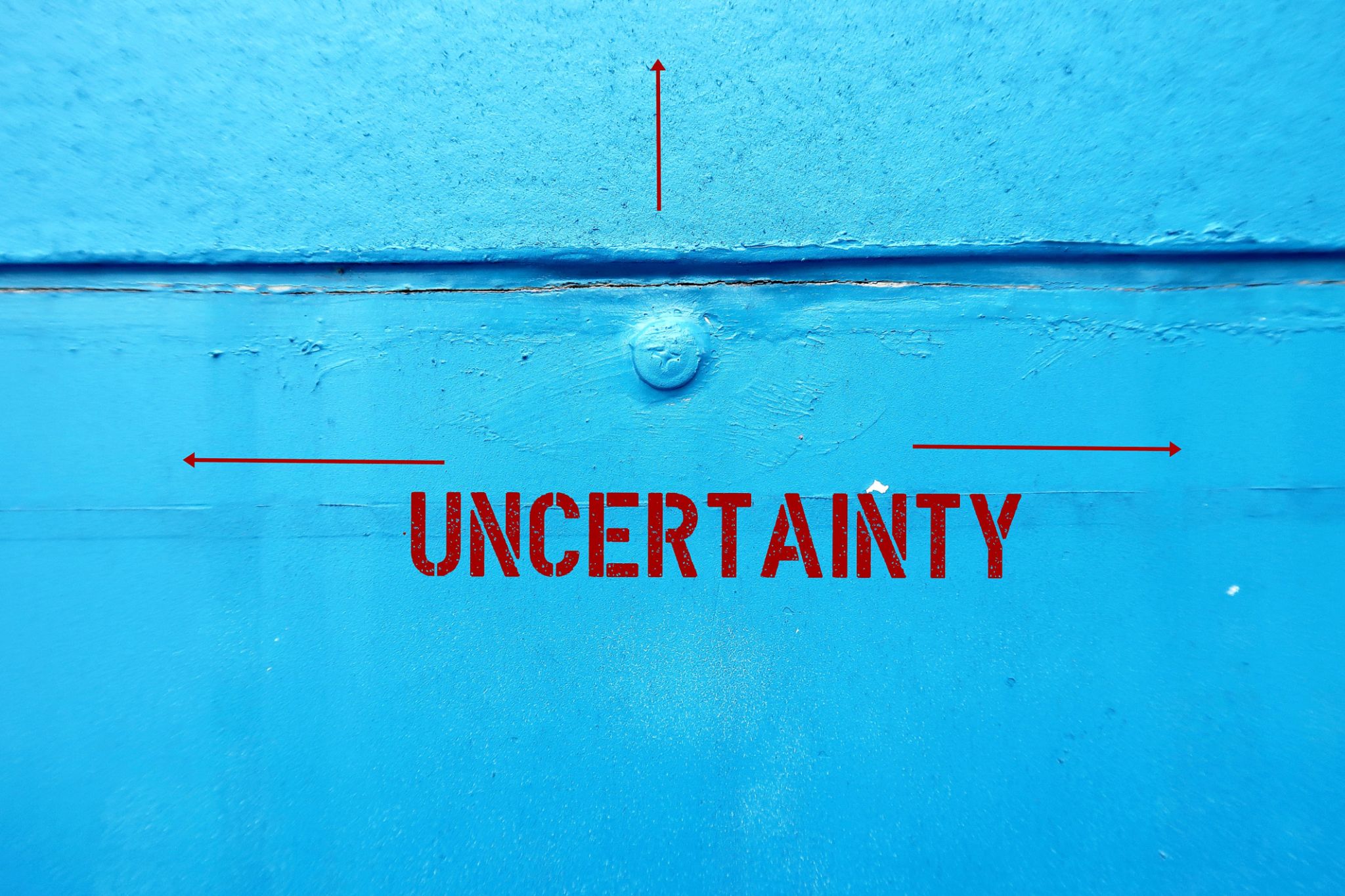Global Anxiety Post Pandemic
Global Anxiety Post Pandemic
The COVID‑19 pandemic produced a sudden and severe disruption to daily life. Lockdowns, uncertainty, social isolation, economic insecurity and fear of infection caused significant stress and anxiety worldwidewho.int. During the first pandemic year, the World Health Organization (WHO) estimated a 25 % increase in global prevalence of anxiety and depression. As vaccination campaigns expanded and restrictions eased, societies began to return to pre‑pandemic routines.
Prevalence and Trajectories of Anxiety after COVID‑19
The WHO’s 2022 briefing highlighted a 25 % worldwide surge in anxiety and depression during the first year of COVID‑19. Contributing stressors included social isolation, inability to work or seek support, grief, fear of infection and economic worries. These effects were particularly pronounced among young people and women, and they occurred alongside major disruptions in mental‑health services (WHO, 2022).

Longitudinal studies of recovery
Research suggests that anxiety levels have declined since the pandemic’s acute phase but remain elevated compared with pre‑pandemic benchmarks. A Swedish prospective cohort study followed individuals with confirmed COVID‑19 infection from February 2022 through early 2023 and measured depression, anxiety and insomnia using validated scales. Depression scores declined steadily, anxiety increased slightly and then decreased, remaining below baseline, while insomnia increased then decreased but remained above baseline. The authors linked the reduction in depression and anxiety to the lifting of restrictions, resumption of normal activities and mental‑health recovery strategies. However, insomnia showed a complex pattern: it improved but remained above pre‑infection levels and was strongly associated with fatigue. Younger adults and those who experienced severe acute infection had poorer mental‑health outcomes.

The European ADJUST study tracked mental health in five countries (Austria, Croatia, Germany, Greece and Portugal) across four waves (2020–2024) using online survey. Psychological difficulties peaked during winter 2020/2021 and diminished thereafter. Differences between pandemic and post‑pandemic assessments were modest, suggesting that psychosocial support is still needed even after the pandemic’s official end. These findings illustrate that while acute pandemic stressors have subsided, the mental‑health impact persists (pmc.ncbi.nlm.nih.gov/articles/).
Cross‑sectional analyses of population samples
Analyses of large population datasets show similar patterns. A U.S. Household Pulse Survey analysis compared anxiety or depression symptoms in the first pandemic year (April 2020–May 2021) with those during the recovery period (June 2023–March 2024) and with pre‑pandemic levels. National estimates improved from 37.6 % during the first year to 29.5 % in the recovery period; however, they remained well above the pre‑pandemic benchmark of 10.8 %. Younger adults (18–29 years), individuals with less than a high‑school education and people with disabilities had higher anxiety/depression ratesmdpi.com, whereas non‑Hispanic Asians reported the lowest rates. No significant gender differences were observed. These data confirm that mental‑health indicators have improved since the pandemic’s height but remain elevated, especially among vulnerable demographic groups.
Anxiety in Youth and Young Adults
A repeated cross‑sectional study of more than 700,000 Finnish secondary‑school students aged 13–20 used nationally representative data collected annually from 2015–2023. The percentage of students meeting cut‑off scores for generalized anxiety, depression and social anxiety increased from pre‑pandemic levels to 2021 and remained high in 2023. Loneliness decreased in 2023, but mental‑health symptoms remained elevated. Girls were particularly affected, whereas boys showed slight improvement. Researchers concluded that the impact of the pandemic on adolescent mental health may be long‑lasting and that targeted support for youth—especially girls—is essential (nordforsk.org).

College students’ mental health
Cross‑sectional research on U.S. college students during the pandemic shows high levels of anxiety. A 2021 survey of 571 students used the Generalised Anxiety Disorder‑7 (GAD‑7) and Patient Health Questionnaire‑9 (PHQ‑9) and found anxiety and depression prevalences of 40.1 % and 39.4 %, respectively (pmc.ncbi.nlm.nih.gov). Factors associated with anxiety included gender, age, race and parental educationpmc (ncbi.nlm.nih.gov). Academic difficulties (e.g., staying motivated, finding a quiet place to study) were linked to higher anxiety and depression severity (pmc.ncbi.nlm.nih.gov). Although the data come from the early pandemic period, they underscore the vulnerability of emerging adults and the need for continued support in the post‑pandemic era.
Anxiety in Long‑COVID Survivors
Post‑COVID‑19 syndrome (long COVID) is characterized by lingering symptoms such as fatigue, cognitive difficulties, anxiety and depression, persisting for weeks or months after infection. A three‑year cross‑sectional study of long‑COVID patients examined anxiety (GAD‑7) and depression (PHQ‑9) scores in 2020, 2021 and 2022. Mean anxiety scores declined from 7.4 ± 2.1 in 2020 to 6.0 ± 2.7 in 2022; the downward trajectory was statistically significant (p = 0.030) (pmc.ncbi.nlm.nih.gov). Mean depression scores fell from 5.1 ± 1.8 to 4.2 ± 1.7 (p = 0.031). Risk factors for depression included current smoking, substance use and greater severity of acute COVID‑19 infection; physical and mental‑health quality of life scores were protective (pmc.ncbi.nlm.nih.gov). The findings indicate gradual improvement in anxiety and depression among long‑COVID patients but highlight the need to address comorbid factors such as fatigue and poor well‑being.

Persistent psychiatric sequelae after hospitalization
An August 2024 report from the University of Oxford summarised findings from the PHOSP‑COVID study, which followed 475 adults hospitalised during the first pandemic wave. Two to three years after infection, participants exhibited significant cognitive deficits (equivalent to ~10 IQ points), and high proportions reported severe depression (≈20 %), anxiety (≈12.5 %) and fatigue (≈25 %) (ox.ac.uk). These symptoms were often present six months post‑infection and persisted or worsened over time. Many participants changed occupations due to cognitive impairments, not because of mood or energy deficits. The study emphasises that early symptom severity is predictive of long‑term psychiatric outcomes, highlighting the importance of early intervention (ox.ac.uk).
Factors Associated with Post‑Pandemic Anxiety

Sociodemographic and economic factors
Research across populations consistently identifies young age, female gender, low socioeconomic status and pre‑existing mental‑health conditions as risk factors for anxiety during and after the pandemic (who.intmdpi.com). For instance, the U.S. Household Pulse Survey found higher anxiety/depression rates in young adults and individuals with lower educational attainment (mdpi.com). Finnish youth data indicated that girls were disproportionately affected (nordforsk.org). International studies also reported that female gender, financial difficulties and previous mental‑health diagnoses predicted worse mental‑health trajectories (pmc.ncbi.nlm.nih.gov). Conversely, some evidence suggests non‑Hispanic Asians reported lower anxiety/depression rates than other ethnic (groupsmdpi.com).
Clinical factors and long COVID
Severity of acute COVID‑19 infection and the presence of post‑COVID impairments (e.g., fatigue and cognitive deficits) strongly predict anxiety and depression trajectories (pmc.ncbi.nlm.nih.govpmc.ncbi.nlm.nih.gov). In the Swedish cohort, fatigue emerged as the most consistent predictor of changes in depression, anxiety and insomnia (pmc.ncbi.nlm.nih.gov). Long‑COVID patients who smoked or used substances had higher depression scores, whereas better physical and mental‑health quality of life scores were protective (pmc.ncbi.nlm.nih.gov). Post‑COVID sleep disturbances and fatigue often co‑occur and can create a vicious cycle with anxiety.
Social and contextual factors
Relaxation of pandemic restrictions, vaccination campaigns and the resumption of social activities likely contributed to improvements in mental health (pmc.ncbi.nlm.nih.gov). The Swedish longitudinal study noted that lifting restrictions allowed people to regain a sense of normality, which may have reduced anxiety and depression (pmc.ncbi.nlm.nih.gov). Nevertheless, the European ADJUST study pointed out that other global crises; financial instability, wars and climate change, may offset some mental‑health gains and require continued psychosocial support. Socioeconomic strains such as job loss and educational disruptions can exacerbate anxiety, particularly among youth and low‑income groups (nordforsk.org).
Interventions and Recommendations

Strengthen mental‑health infrastructure. The WHO noted that mental‑health services were among the most disrupted during the pandemic (who.int). Governments should invest in accessible mental‑health services, including digital platforms, tele‑therapy and community‑based programs, with special attention to vulnerable populations (youth, women, individuals with disabilities and long‑COVID survivors).
Early identification and intervention. Long‑COVID studies demonstrate that psychiatric symptoms present early are predictive of later outcomes (ox.ac.uk). Routine screening for anxiety, depression and cognitive deficits in COVID‑19 survivors, especially those with severe initial infection or persistent fatigue, can enable timely referral to multidisciplinary care (neurology, psychiatry, rehabilitation).
Targeted support for youth and young adults. School‑based mental‑health programs, peer support and training for educators should be expanded to address the high prevalence of anxiety among adolescents and college students (nordforsk.orgpmc.ncbi.nlm.nih.gov). Interventions should consider gender differences and promote resilience, social connectivity and healthy coping.
Address social determinants of mental health. Policies that reduce economic insecurity such as income support, affordable housing and access to education, can mitigate anxiety, particularly among low‑income and less educated (populationsmdpi.com). Public health messaging should also counter misinformation and reduce fear of infection.
Promote healthy lifestyles and sleep hygiene. Physical activity, balanced diet and good sleep practices can protect against anxiety and depression. Post‑COVID sleep disturbances and fatigue should be treated concurrently (pmc.ncbi.nlm.nih.gov). Behavioral interventions such as cognitive‑behavioral therapy for insomnia and mindfulness can help break the fatigue–insomnia–anxiety cycle.
Conclusion
The acute phase of the COVID‑19 pandemic was accompanied by a sharp rise in anxiety worldwide. Recent research shows that anxiety symptoms have decreased since the height of the pandemic but remain higher than pre‑pandemic levels. Longitudinal studies indicate that while depression and anxiety tend to decline over time, insomnia and other post‑COVID symptoms may persist (pmc.ncbi.nlm.nih.govpmc.ncbi.nlm.nih.gov). Population‑level analyses reveal that young adults, individuals with lower education, long‑COVID survivors, and girls/young women are disproportionately affected (mdpi.comnordforsk.org). On the other hand, some individuals exhibit improved mental health after the pandemic, suggesting resilience and adaptive coping (nature.com). To address ongoing anxiety in the post‑COVID era, public health strategies must combine robust mental‑health services, early identification and targeted interventions, while simultaneously tackling the social and economic determinants that underlie psychological distress.
Bibliography
Badinlou, F., Rahimian, F., Hedman‐Lagerlöf, M., Lundgren, T., Abzhandadze, T., & Jansson‐Fröjmark, M. (2024). Trajectories of mental health outcomes following COVID‐19 infection: A prospective longitudinal study. BMC Public Health, 24, 452pmc.ncbi.nlm.nih.gov.
Bota, A. V., Bogdan, I., Razvan, D. V., Ilie, A. C., Tudor, R., Csep, A. N., & Marincu, I. (2024). A three‐year cross‐sectional analysis of depression, anxiety, and quality of life in patients with post‐COVID‐19 syndrome. International Journal of General Medicine, 17, 751–762pmc.ncbi.nlm.nih.gov.
Gandhi, S., Jordan, A., Glaman, R., & Morrow, B. (2024). Unmasking the impact of COVID‐19 on the mental health of college students: A cross‐sectional study. Frontiers in Psychiatry, 15, 1453323pmc.ncbi.nlm.nih.gov.
Kiviruusu, O., Ranta, K., Lindgren, M., et al. (2024). Mental health after the COVID‐19 pandemic among Finnish youth: A repeated, cross‐sectional, population‐based study. The Lancet Psychiatry (summarized by NordForsk)nordforsk.org.
Novaković, I. Z., Ajduković, D., Ajduković, M., Kenntemich, L., Lotzin, A., & Schäfer, I. (2025). Mental health during and after the COVID‐19 pandemic: A longitudinal study over 42 months in five European countries. European Journal of Psychotraumatology, 16(1), 2488700pmc.ncbi.nlm.nih.gov.
Reutter, M., Hutterer, K., Gründahl, M., Gall, D., Dannlowski, U., Domschke, K., Gamer, M. (2024). Mental health improvement after the COVID‐19 pandemic in individuals with psychological distress. Scientific Reports, 14, 5685nature.com.
Shah, A. D., Laternser, C., Tatachar, P., & Duong, P. (2024). The COVID‐19 pandemic and its effects on mental health—A before, during, and after comparison using the U.S. Census Bureau’s Household Pulse Survey. International Journal of Environmental Research and Public Health, 21(10), 1306mdpi.com.
World Health Organization. (2022, March 2). COVID‑19 pandemic triggers 25 % increase in prevalence of anxiety and depression worldwidewho.int. https://www.who.int/news/item/02-03-2022-covid-19-pandemic-triggers-25-increase-in-prevalence-of-anxiety-and-depression-worldwide
University of Oxford. (2024, August 1). Long‐term cognitive and psychiatric effects of COVID‐19 revealed in new studyox.ac.uk. https://www.ox.ac.uk/news/2024-08-01-long-term-cognitive-and-psychiatric-effects-covid-19-revealed-new-study
*Niall MacGiolla Bhuí PhD is a researcher, editor and ghostwriter with over 30 years+ experience writing about various aspects of mental health and wellness.